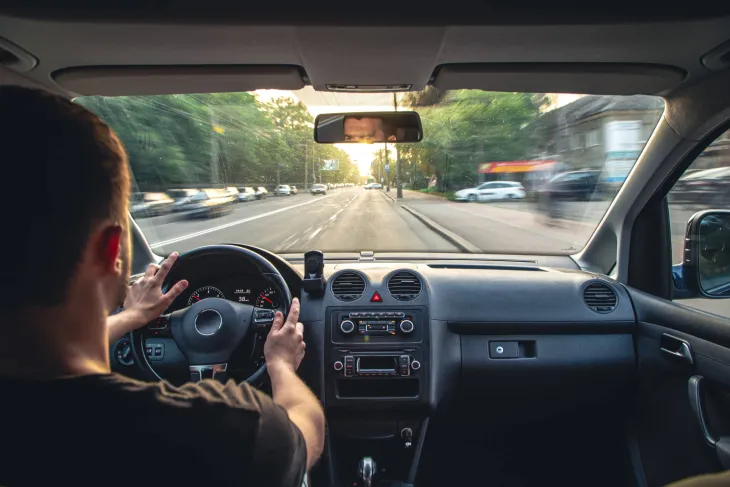Driving

If you're moving to Barcelona and bringing your car with you, read this section providing information on a few basic rules and on the initiatives being run in Barcelona that affect all vehicle traffic. Managing traffic in any city is always a challenge.
Bringing over your vehicle
If you bring your vehicle to Barcelona, note that you will have to have it registered if your period of residence here is longer than six months. This is a formality that will result in the allocation of a valid licence number for your vehicle's identification in Spain. You will also have to take out an insurance policy for the new licence number your vehicle has been assigned.
Note too that all vehicles are subject to periodic inspections here (ITV, which stands for Inspecció tècnica de vehicles) Vehicle owners are responsible for booking appointments for the service in advance at one of the centres established for such inspections. You can be fined for not being up to date with your ITV.
You must also check the validity of your driver's licence before you attempt to drive in Spanish territory. You can drive with most licences for up to six months since taking residence in Spain, if they are valid and you are of legal driving age in Spain. After six months, depending on whether you’re from an EU country or a country with an agreement with Spain, you may be able to exchange your licence for a Spanish one. However, if your country does not have an agreement with Spain, we regret to inform you that you will have to get a Spanish driver's licence. The good news is that there are driving schools in Barcelona that can prepare you in several languages to make the process easier for you.
Measures for a sustainable mobility
Barcelona’s municipal government is working to ensure safe, sustainable, fair and efficient mobility and promoting travel by foot, bicycle and public transport.
Note that pedestrians in Barcelona have right of way over motorcycles and cars. Which is why the city has seen an increase in its number of pedestrian zones, where maximum speeds have been reduced to 30 km/h.
There have also been modifications to traffic flows in some streets, with superblock projects (superilles), where surrounding traffic is restricted in favour of pedestrians, bicycles and public transport.
For people’s health, because the planet needs it and because action needs to be taken on the climate emergency, the permanent low emissions zone (ZBE which stands for zones de baixa emissió) comes into force on 1 January 2020. The measure restricts the circulation of vehicles which pollute the most, cutting NO2 emissions by 15% and improving air quality.
For further information go to Mobilitat and to ZBE Barcelona.
Advice for driving
As with most continental European countries, we drive on the right in Barcelona.
In general, the speed limit inside the city is 50 km/h, although you will also see it reduced to 30 km/h in some areas where cars and motorcycles share public spaces with pedestrians.
Speed limits on express roads such as bypasses are subject to congestion and pollution conditions. So maximum speed indicators can vary from section to section and also according to daily circumstances.
Speed limits outside the city, on highways and motorways are 90 km/h and 120 km/h, respectively. You will find control radars on the city’s roads and at the city’s access points.
Use of seatbelts is mandatory as is use of helmets for motorcycles and mopeds, irrespective of their power.
Children under the age of 12 must be seated in back seats, regardless of their height and weight. If they are under 135 cm in height, they must travel in a child-restraint seat, irrespective of their age.
Speaking on mobile phones or eating while driving is prohibited. While driving regulations do not prohibit smoking, note that traffic officers may impose a fine for smoking where they consider it poses a danger to traffic. We therefore advise you to stop driving should you need to eat, drink or smoke.
Finally, don't drive if you have been consuming alcoholic drinks. Think not only of your own safety but the safety of other drivers and pedestrians. Breathalyser tests are regularly conducted in Barcelona, and drivers must take them where so required by a police officer.
Parking
Barcelona has underground and surface-level parking run by private companies and by a public operator too: the B:SM municipal company They offer paid-parking places for both short- and long-term parking.
If you wish to park on the street, remember that parking in many of the city’s areas is regulated through the AREA system. Zones where this applies have special parking regulations and rates.
Under this system there are several types of parking places: blue, green, exclusive for residents in the area, for the urban distribution of goods, for motorbikes, coaches and other vehicles (reserved places).
Blue places are aimed at bringing about a continuous turnover of vehicles and are normally located close to shopping centres, hospitals, schools etc. Any kind of vehicle can park in them, provided the corresponding rate is paid and the maximum duration always stated on the road's signs is not exceeded. The payment receipt issued by the parking meter must be left on display inside the vehicle.
Green places give the area's local residents priority parking. If you have a resident’s card, you can park your vehicle in these parking places and in those that are exclusive for your area’s residents, provided you pay the corresponding rate.
For further information, visit the AREA system’s website, where you can also download an app for your mobile that enables you to pay your vehicle’s rates and manage its parking.
Check also the procedure to park your vehicle in the area where you live.


